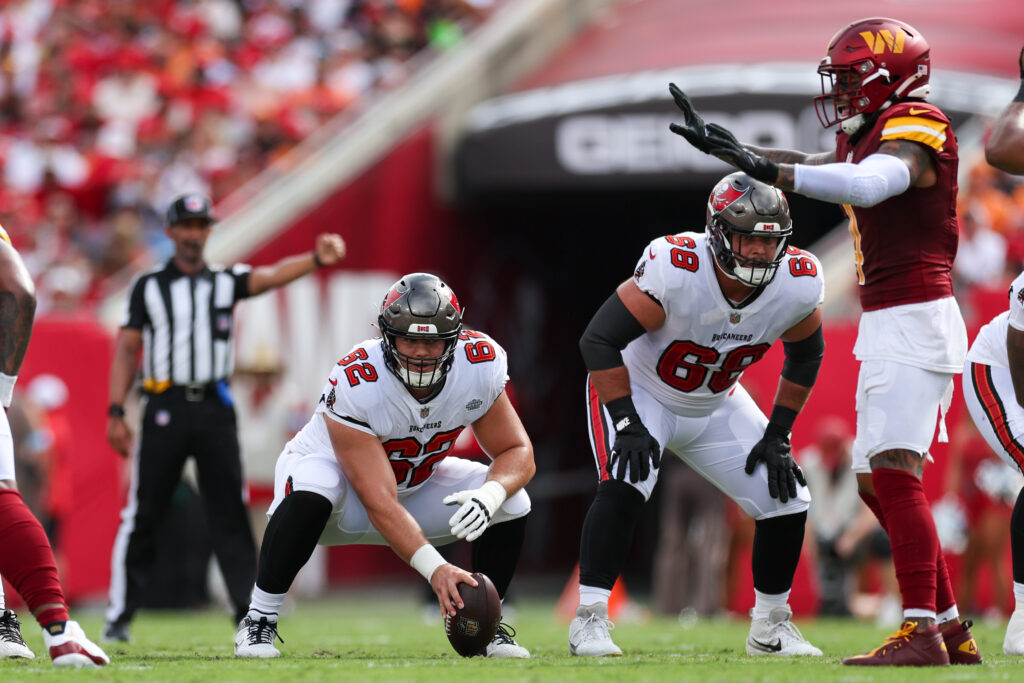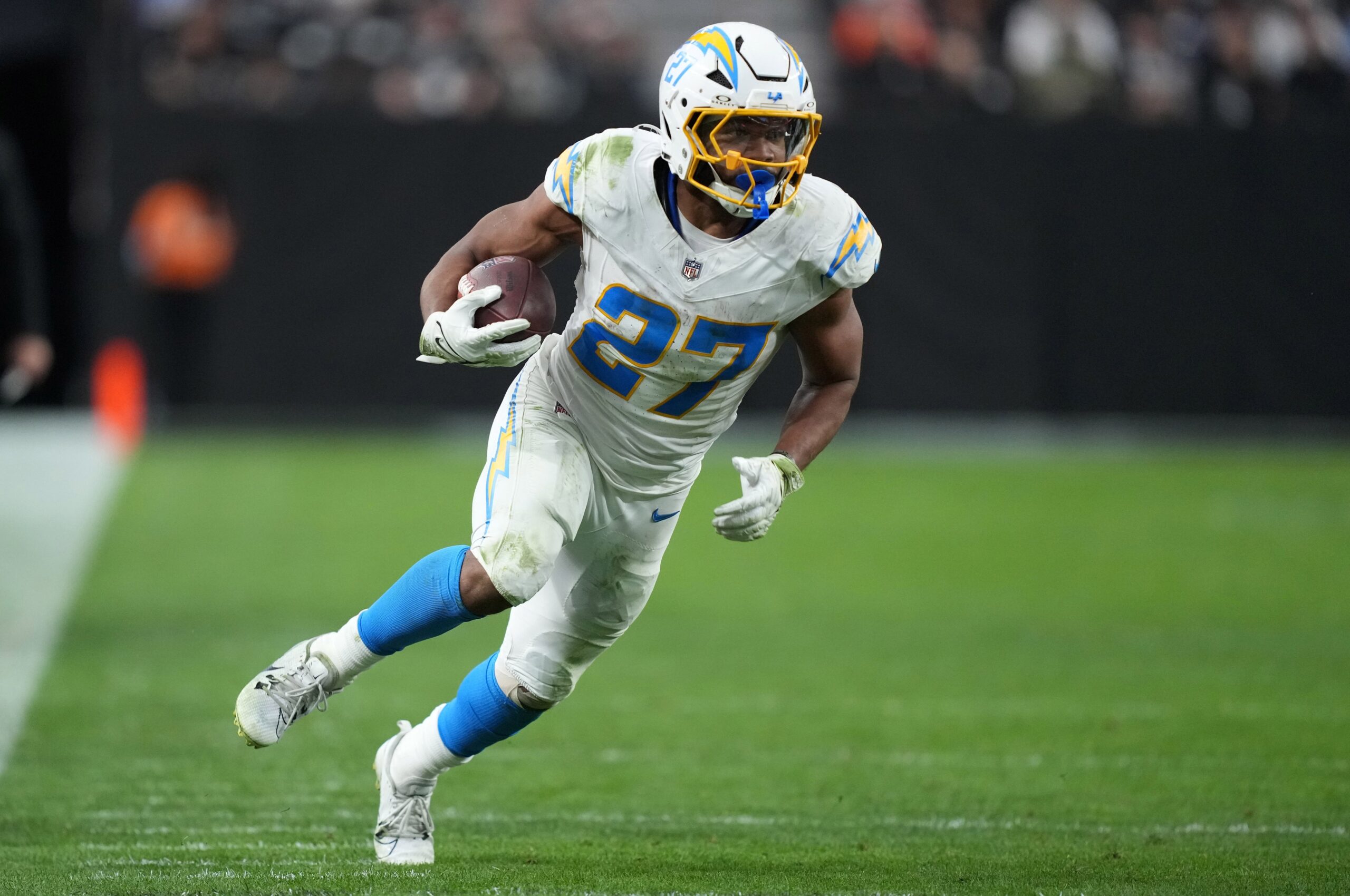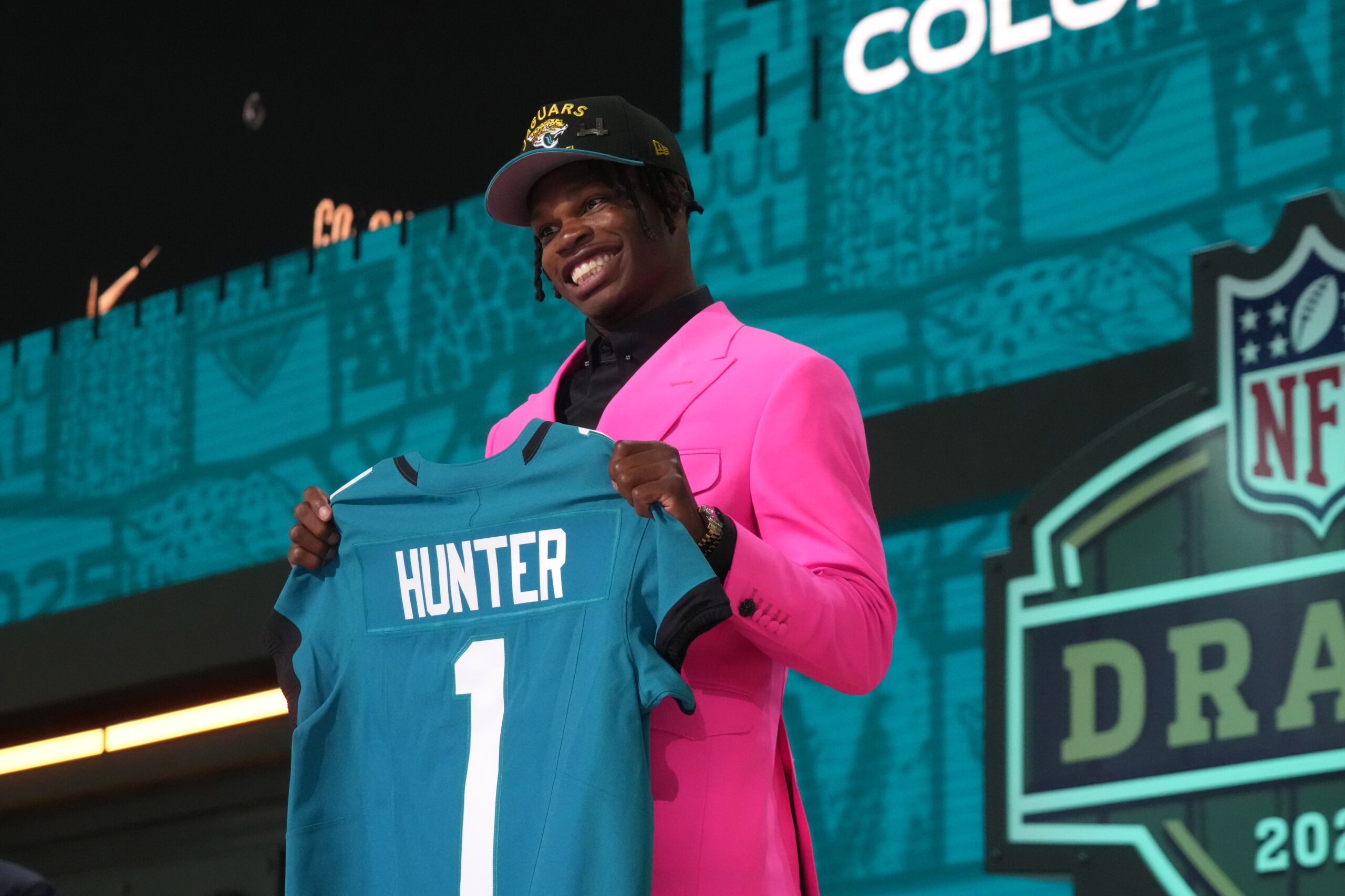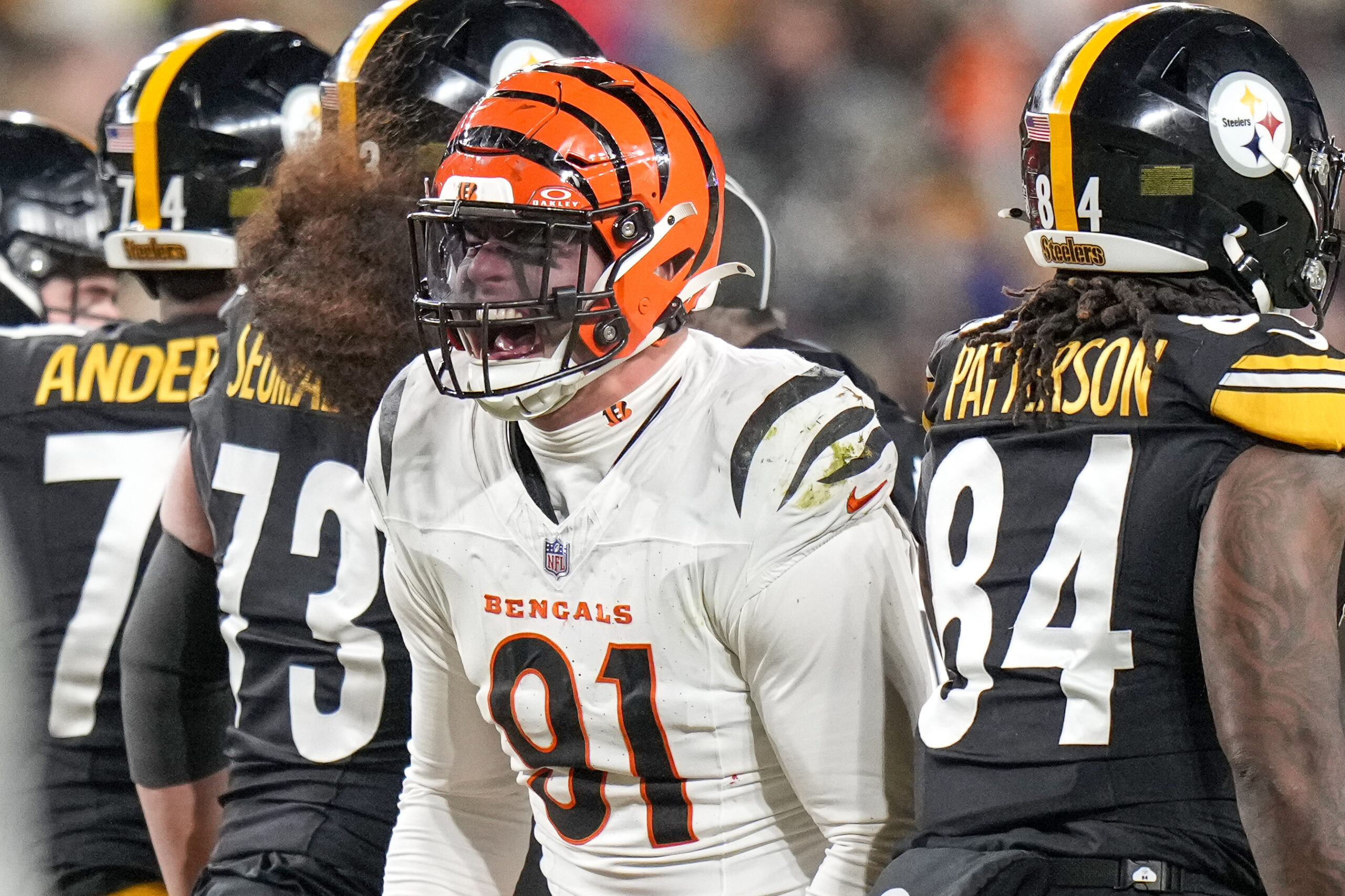Expert Analysis
9/18/24
6 min read
NFL Center Position Becoming More Important Than Ever

In the read-and-react world of the NFL, one of the most significant reactions taking place is the evolution of interior defensive linemen.
Players like Dexter Lawrence, Vita Vea, and Chris Jones are just three examples of the bigger, quicker, stronger, and more explosive players on the interior of the defensive line. The new era of defensive tackles are collapsing the quarterback pocket from the middle while stuffing the run game.
The league’s adjustment will be the most significant in the last decade. How teams react to the evolution of the interior defensive lineman will be a momentous driver of how the center position looks and plays and how offensive lines of the future are put together.
“I think that’s why you’ve seen a shift,” Titans coach Bill Callahan said. “The really dominant players in the league right now are the interior players, the Chris Jones and Quinnen Williams of the world, guys that can really get after the interior part of the pocket. … A lot of what you see now are the fronts starting to cover up your center, make one-on-ones on the inside, less so about the outside.”
As a result, requirements for the center position are undergoing a dramatic transformation. And it’s a challenge. Because we don’t yet know what the prototype is, we just know what it used to be.
In the past, the center was a strong, squatty, cerebral player who was counted on to anchor the middle. Now, the center has to be just as strong, quick, agile, and explosive as the linemen across from him.
The change is similar to the evolution of the offensive tackle, who suddenly realized they had to block players like Lawrence Taylor, Derrick Thomas, Kevin Greene, and Jason Taylor. This new reality forced a shift in search of a 2.0 version of body type in NFL left tackles. Players like Jimbo Covert, Bruce Matthews, Jonathan Ogden, and Joe Thomas became the new prototype, future Hall of Famers who were swimming much closer to the gene pool of their defensive counterparts.
Teams are searching for that same fit at center, and nothing illustrates the difficulty of this search better than the numbers. Since 2022, 24 centers have been drafted, and 34 signed who were not drafted. That shows teams don’t know what they are looking for, though they continue looking.
The Bucs even drafted a left tackle from Duke in the first round this year with the intention of moving him to center, which they did. Graham Barton is a 6-5, 314-pound center. It’s unimaginable that an NFL team invested precious draft capital into an elite college left tackle to then convert him to an NFL center. But it’s a new era in NFL football, and the center position is on the brink of becoming the NFL’s new left tackle.

When uncertainty creeps in while trying to identify trends in the NFL, always reference Jay-Z’s infamous lyrics, “Men lie, women lie, numbers don’t.” The numbers consistently tell the hidden truth regarding the machinations of NFL clubs.
Kansas City Chiefs standout center Creed Humphrey is the highest-paid center in the history of the NFL. Not only is he the highest-paid center, but his new contract places him as the 10th highest-paid left tackle on average per year and the 6th highest guarantee of all left tackles.
In comparison, the Saints' Eric McCoy, whose 2022 contract placed him as the NFL highest-paid center at the time, would have been the 19th highest-paid left tackle on average per year and the 17th highest guarantee of left tackles at the time of signing.
Creed Humphrey’s contract has pioneered unchartered financial territory for centers.
NFL clubs aren’t in the business of wasting draft picks, haphazardly signing rookie free agents, or resetting financial markets, so why are we witnessing such a dramatic shift in the valuation of centers? Simply because the demands of the position have evolved lockstep with the evolution of offensive football but lag behind the physical advancement of interior defensive linemen.
Today’s modern offense is more than 80 percent shotgun, with quarterbacks like Jalen Hurts of the Eagles and Joe Burrow of the Bengals in the shotgun 95 percent of the time. In 2003 offenses were running shotgun 14 percent of the time, according to Sharp Football.

This shift has overhauled the job requirements for centers and changed what constitutes premium traits required for success at the position.
The shotgun snap for a center completely transforms the mindset of the player. The quarterback playing under center is akin to throwing a fastball, where shotgun is more curveball.
A center with the quarterback underneath is completely in control of one thing: himself. The play speed and intensity is higher because the margin for error on an errant snap is lower. The center understands the only thing that matters is what they do.
The shotgun snap is a different world because the ball is in control. Every center knows he’s one bad snap away from an entire game shifting in favor of the opponent.
Modern centers must apply a more specialty mindset to the game. In return, they’re going to be less consistently physical at the point of attack and this is where it all gets interesting. Because if my center isn’t in a prime position to match the mindset and physical abilities of the opponent, it becomes a problematic world for NFL offenses.
It's evident why a player like Humphrey is being paid like a top-10 left tackle. He’s going to help the Chiefs win games but will certainly not put the Chiefs in a position to lose one. The shift in premium for a good center in today’s modern NFL is higher than ever.
Does this mean Creed Humphrey is the new prototype? It’s difficult to say, because we are talking about a great player, a part of one of the greatest rosters in NFL history. I don’t believe it’s unfair to attribute part of his success to supporting cast around him.
NFL clubs will have to keep exploring. There won’t just be one answer to the problem. Teams will adjust their scouting, offenses, and expectations of centers moving forward.
In the meantime, similar to a prized left tackle or franchise level quarterback, when an NFL club finds the guy in the middle, they’ll appreciate him, and most certainly they’ll have to pay him.








